QUAD 2812
Copyright 2020 © Troels Gravesen
My neighbor inherited a pair of
QUAD ESL-63 speakers from his granddad together with a Thorens turntable with SME tonearm and some other good stuff - and I had
the speakers for loan a few days. This granddad had good taste and cherished his vinyls with the best of best in the 80'ies.
After that, I just had to have a pair for reference.
Maybe I shouldn't tell I've bought a pair of QUAD 2812 electrostatic
speakers. These are commercial speakers and may discourage you from
building your own speakers based on conventional dynamic drivers but I
need them as a reference for overall coherence in mating dynamic
drivers. And still, you can get a lot of good sound for less than ~7000
EUR and there are some issues to be addressed before engaging in
something like the QUADs.
1:Efficiency of the 2812 is nothing to write home about, some 86
dB/2.8V/1 meter. They're inefficient, yet still do not need a lot of
power as they -
2: - really can't play very loud either. If you push them too hard
there's a protection circuit that shuts off the speaker. 30-60 good
watts will do.
3. You do not get the kick-butt quality from a kick drum as you may from
many other speakers. Rock and heavy metal at loud levels? Forget it.
4: The QUADs are dipoles, hence takes special care from placement in
your room and to get the best possible bass response although it has to
be said that dipoles are less critical on room-nodes compared to
mono-poles, so maybe not an issue at all.
Let me start with the bass first, because this may seem the achilles'
heal of the QUADs. Not to my thinking. First of all it goes deep, but
just not with the dynamics of a 15-18" bass driver. Yet, I love it for its
coherence and weightless quality. Mind you, we have a huge membrane,
many times the size of a 15" bass driver, and it weighs less than
the diaphragm of a dome tweeter.
The naturalness and coherence of instruments and vocals is unparalleled.
The ability to portray the room in which the recording had taken place
is unparalleled. You may miss the sparkle and maybe edginess of certain
instruments only to find out they should never have been there. You may
put on a jazz quintet and for the first time hear the subtle chords
thrown by the piano player during the solo of another musician, chords
so subtle they vanished in the colouration and time smear of
conventional multi-way dynamic drivers. I could go on...
"And that's all I have to say about that." to use a famous quote.

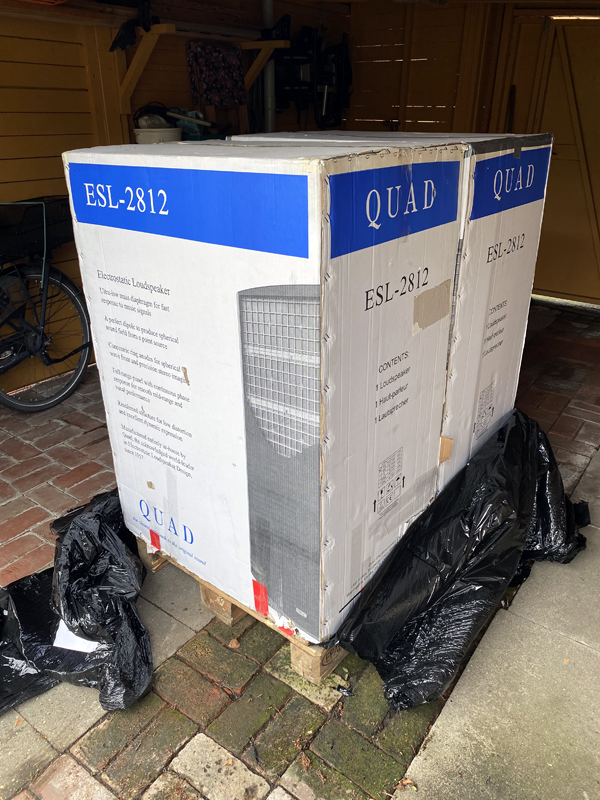
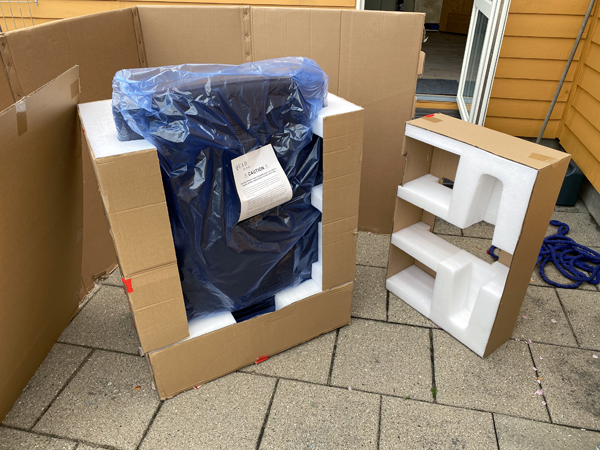
Coming all the way from China, these babies exactly fill a whole
standard pallet!
Very well packed I should say.
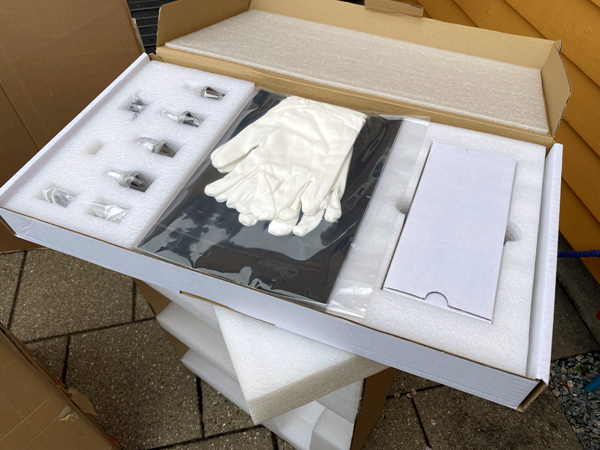
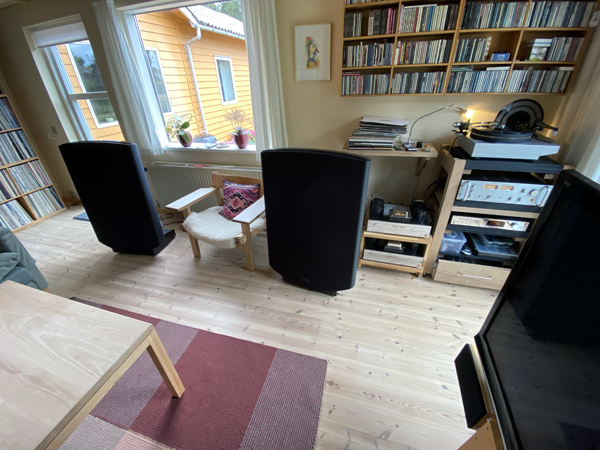
I'm not sure I'll ever use the white gloves....
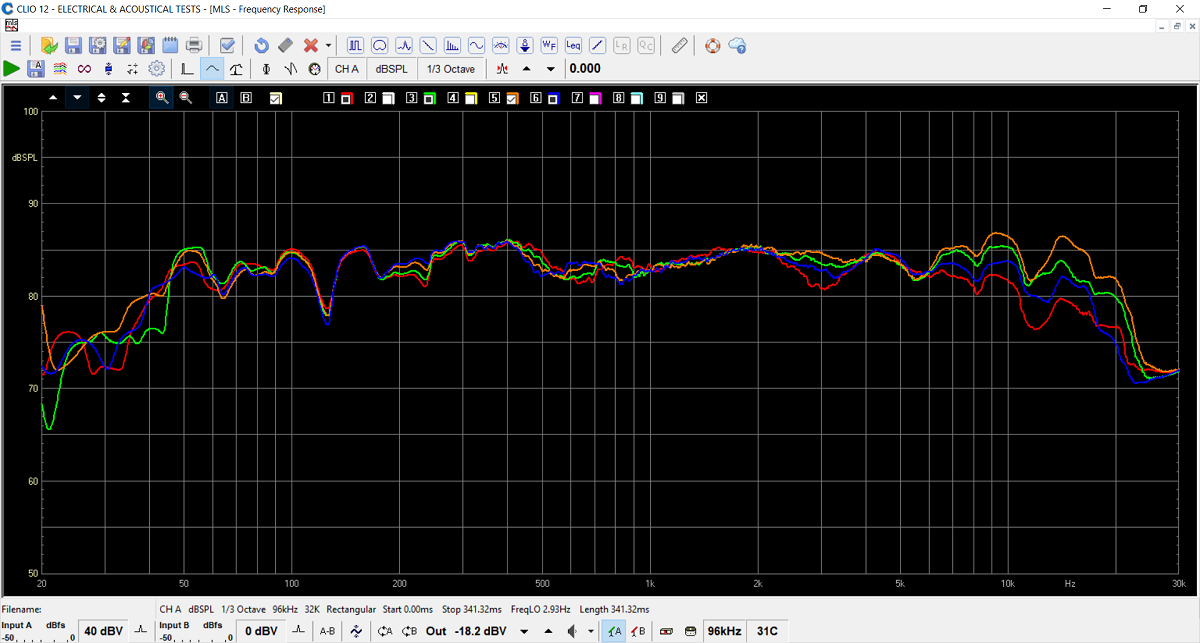
In-room measurement @ 1 meter distance and 2.8V signal level. Speakers
lifted on 30 cm stand. 320 ms window and smoothed 1/3 octave.
Red = 50 cm above floor level, green = 60 cm above floor level, blue =
70 cm above floor level, orange 80 cm above floor level.
55-60 cm above floor level is around middle of speaker panel.
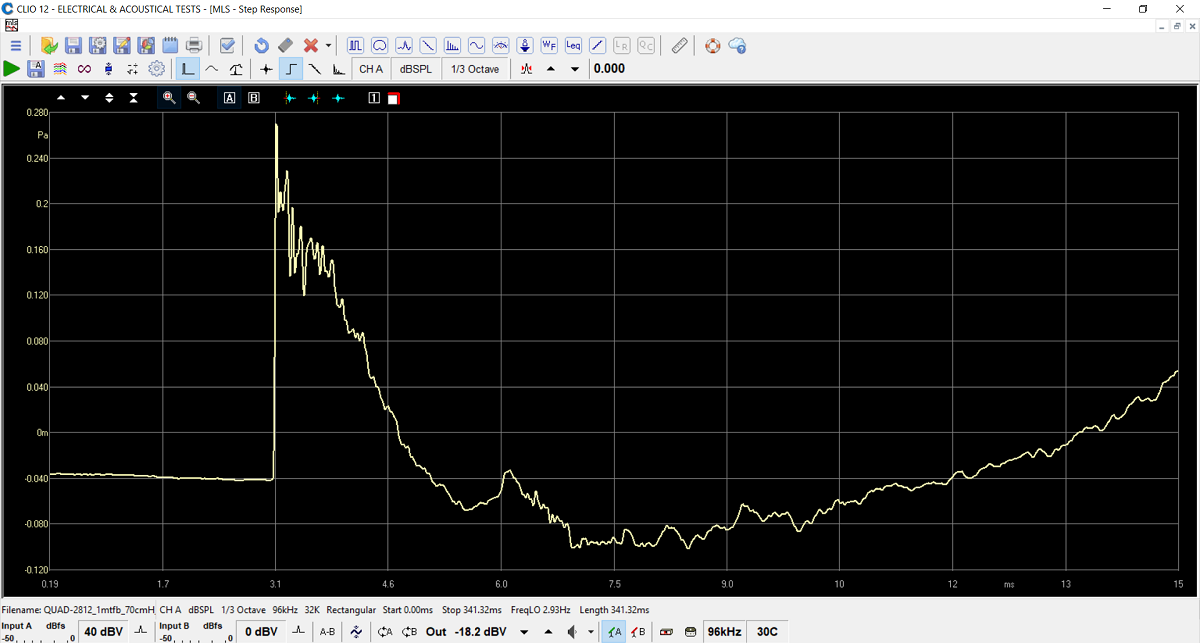
Step response display the familiar
"I-wish-all-speakers-looked-like-this" profile.
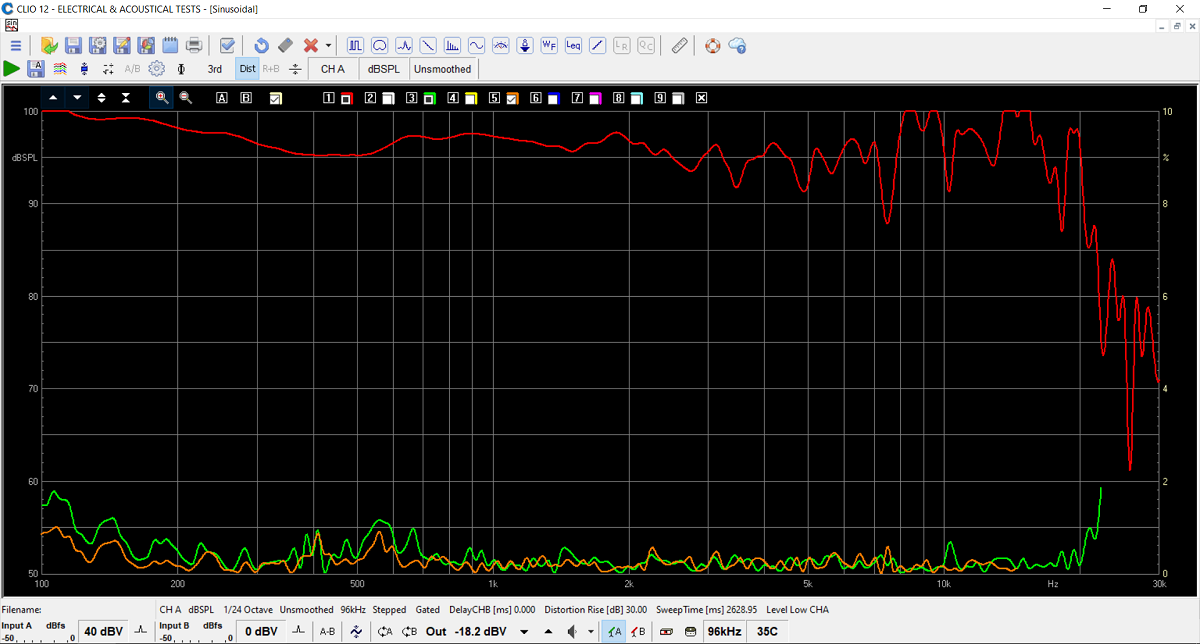
Distortion measured with microphone 5 mm to front in middle of panel @
2.8V, equivalent to around 85-86 dB @ 1 meter, 2.8V.
Green = 2nd harm., orange = 3rd harm.
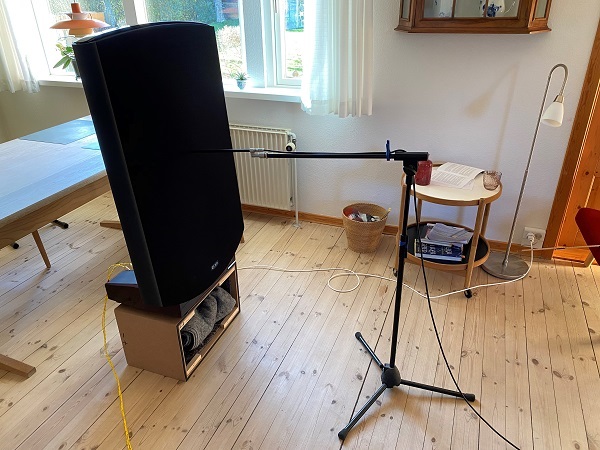
Distortion measurement.